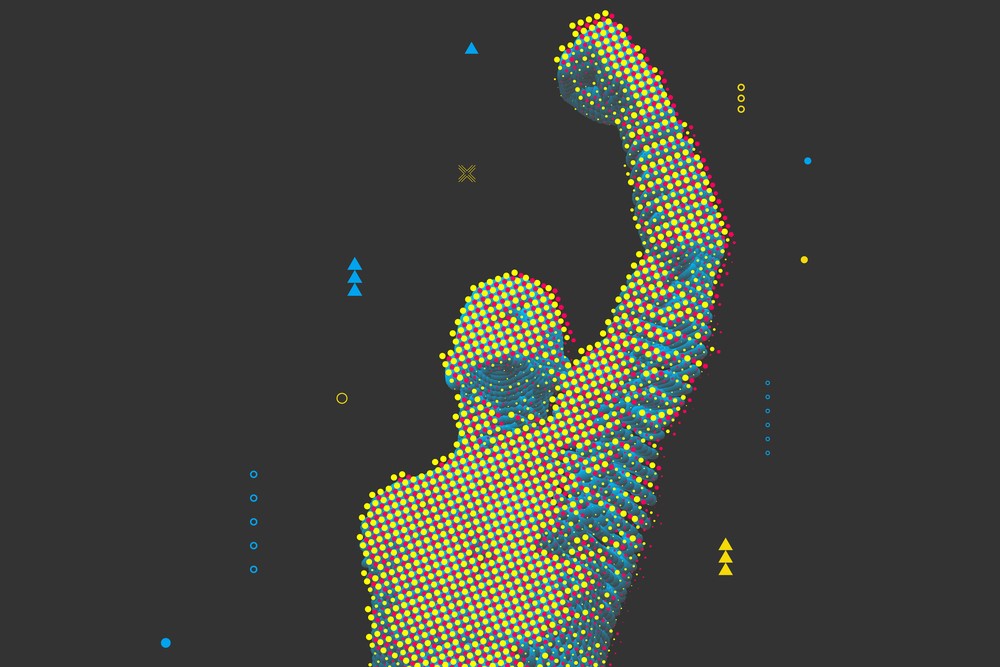On Saturday, June 11th, Blake Lemoine, an employee at Google was suspended for violating his confidentiality agreement with the company. He violated this agreement by publishing a transcript of his conversation with LaMDA, a company chatbot. He wanted this transcript public as he believes it demonstrates LaMDA is ‘sentient’ – by which Lemoine means that LaMDA “has feelings, emotions and subjective experiences.” Additionally, Lemoine states that LaMDA uses language “productively, creatively and dynamically.”
The notion of AI performing creative tasks is significant.
The trope in fiction is that AI and other machinery will be used to remove repetitive, daily tasks in order to free up our time to engage in other pursuits.
And we’ve already begun to move towards this reality; we have robots that can clean for us, cars that are learning to drive themselves, and even household robots that serve as companions and personal assistants. The possibility of creative AI represents a significant advance from this.
Nonetheless, we are seeing creative AI emerge. Generative Pre-trained Transformer 3, or GPT-3, a program from OpenAI is capable of writing prose; GPT-3 can produce an article in response to a prompt, summarize a body of text, and if provided with an introduction, it can complete the essay in the same style of the first paragraph. Its creators claim it is difficult to distinguish between human-written text and GPT-3’s creations.
AI can also generate images – software like DALL-E 2 and Imagen produce images in response to a description, images that may be photo-realistic or in particular artistic styles. The speed at which these programs create, especially when compared to humans, is noteworthy; DALL-E mini generated nine different images of an avocado in the style of impressionist paintings for me in about 90 seconds.
This technology is worrisome in many respects. Bad actors could certainly use these tools to spread false information, to deceive and create further divisions on what is true and false. Fears of AI and machine uprising have been in pop culture for at least a century.
However, let us set those concerns aside.
Imagine a world where AI and other emergent technologies are incredibly powerful, safe, will never threaten humanity, and are only utilized by morally scrupulous individuals. There is still something quite unsettling to be found when we consider creative AI.
To demonstrate this, consider the following thought experiment. Call it Underwhelming Utopia.
Imagine a far, far distant future where technology has reached the heights imagined in sci-fi. We have machines like the replicators in Star Trek, capable of condensing energy into any material object, ending scarcity. In this future, humans have fully explored the universe, encountered all other forms of life, and achieved universal peace among intelligent beings. Medical technology has advanced to the point of curing all diseases and vastly increasing lifespans. This is partly due to a large army of robots, which are able to detect when a living being needs aid, and then provide that aid at a moment’s notice. Further, a unified theory of the sciences has been developed – we fully understand how the fundamental particles of the universe operate and can show how this relates to functioning on each successive level of organization.
In addition to these developments, the creative arts have also changed significantly. Due to both the amount of content created through sophisticated, creative AI, as well as a rigorous archival system for historical works, people have been exposed to a massive library of arts and literature. As a result, any new creations seem merely derivative of older works. Anything that would be a novel development was previously created by an AI, given their ability to create content much more rapidly than humans.
Underwhelming Utopia presents us with a very conflicted situation. In some sense, it is ideal. All materials needs are met, and we have reached a state of minimal conflict and suffering. Indeed, it seems to be, at least in one respect, the kind of world we are trying to build. On the other hand, something about it seems incredibly undesirable.
Although the world at present is severely faulted, life here seems to have something that Underwhelming Utopia lacks. But what?
In Anarchy, State and Utopia, Robert Nozick presents what is perhaps the most famous thought experiment of the 20th century. He asks his readers to imagine that neuroscientists can connect you to a machine that produces experiences – the Experience Machine. In particular, it provides those connected to it with a stream of the most pleasurable experiences possible. However, if you connect to the machine, you cannot return to reality. While connected to the machine, the experiences that you have will be indiscernible from reality, the only other beings you will encounter are simulations, and you will have no memory of connecting to the machine.
Most people say that they would not connect. As a result, many believe that the life offered to us by the Experience Machine must be lacking in some way. Many philosophers use this as the starting point to defend what they call an Objective List theory of well-being. Objective List theorists believe that there are certain things (e.g., love, friendship, knowledge, achievements) that are objectively good for you and other things that are objectively bad. One is made better-off when they attain the objectively good things, and worse-off to the extent that they do not attain the goods or to the extent that the bad things occur. Since life on the Experience Machine contains only pleasurable experiences, it lacks those objective goods which make us better off.
Among the goods that Objective List theorists point to are a sense of purpose. In order to live well, one must feel that one’s actions matter and are worth doing. And it is this that Underwhelming Utopia lacks.
It seems that everything worth doing has already been done, and every need that arises will be swiftly met without us having to lift a finger.
This is the world that we inch closer to as we empower machines to succeed at an increasingly greater number of tasks. The more that we empower programs to do, the less that there is left for us to do.
The worry here is not a concern about job loss, but rather, one about purpose. Perhaps we will hit a wall and fail to develop machines whose creative output is indistinguishable from our creations. But if advancements continue to come at an explosive rate, we may find ourselves in a world where machines are better and more efficient than humans at activities that were once thought to be distinctly human. In this world, it is unclear what projects, if any, would be worth pursuing. As we pursue emergent technologies, like machine learning, we should carefully consider what it is that makes our time in the world worthwhile. If we enable machines to perform these tasks better than we do, we may pull our own sense of purpose out from under our feet.


